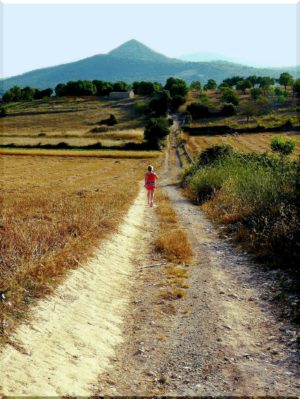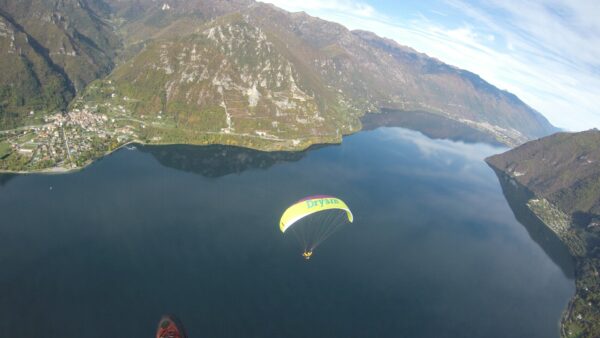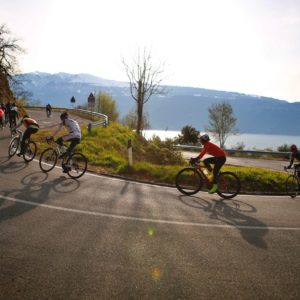TRAIL RUNNING. TRAINING AND EQUIPMENT FOR OUTDOOR RUNNING
If you’re searching for an outdoor activity that combines the urge to run with the need to be immersed in nature, trail running is the sport for you. This speciality takes its name from the activity of running along trails across rough hilly terrain.
Different types
Since trail running is practised in a natural environment it is very difficult to define a precise classification. Each race is unique and unlike any other.
Various parameters are nonetheless used to distinguish the different types: the distance covered, the maximum percentage of asphalt, the ground conditions, the climatic conditions, the elevation gain, and the gradient.
The difficulty of a route is generally lower when the positive elevation gain is spread along the whole distance rather than occurring on a single ascent. Undulating paths allow for recovery during descents, and the level of fatigue is reduced when the ascent is short in duration.
How to prepare for a trail
Contrary to popular belief, this is not a discipline only for experienced runners. You don’t necessarily have to take part in races: you can just work out for the pleasure of doing so and to improve your fitness.
The most important thing is to be well prepared athletically, a basic requirement for tackling trail running under the best possible conditions.
Warming up and cooling down
Like in any other discipline it’s good practice to warm up before each workout, combining continuous running and dynamic stretching exercises.
At the end of each workout it’s also best to cool down with a few minutes of slow running that will restore your body to its physiological state prior to departure. This should be accompanied by static stretching exercises, in particular for the lower limbs, to rebalance your muscles and tendons and to prepare for the next session.
Trail running: athletic preparation
Trail running is more physical than road running and calls for excellent preparation to avoid trauma. Variations in the terrain and the elevation gain can put many muscles and joints under stress. It’s therefore important for beginners and more experienced trailers alike to do some preparatory strengthening exercises.
The aim of these is to work on the areas of the body most at risk, i.e. the feet, ankles, thighs, and abdomen.
The importance of training uphill
When you’re about to start training running uphill can seem daunting and difficult: there’s often a tendency tend to go too fast and, after a short time, your heart rate skyrockets. First of all, running uphill requires technique. Here are a few tips for doing it the best way.
Uphill running: run on your forefeet
During the climb you need to put your weight on your forefeet. This way of running promotes a bouncy and light stride. Pay attention to your calves: they’ll be under a lot of stress and your first sessions in particular could be very tiring.
Don’t lean too far forward with the body
To counteract the descent people often lean too far forward, but this is a mistake. Don’t bring your torso too far forward: the right technique is to straighten up, look ahead and slightly shift your centre of gravity towards the forefeet.
Climb at your own pace
Don’t change your pace and don’t try to lengthen your stride before slowing down later, since changing pace consumes a lot of energy at the expense of endurance.
The importance of downhill training
Once you’ve mastered your climbing technique, it’s time to think about going down!
The importance of where you put your weight
The technique to use is basically the same as when you go down the stairs: lean firstly on your toes. Along with the action of the legs, landing on your forefeet helps to cushion shocks.
The position of the trunk during the descent
Your trunk should help you to maintain balance. It’s also very important to learn how to make the most of your arms. Around a curve, for example, turn your arms more and the rest of your body will follow.
Lengthen your stride
Taking big steps will help you analyse the terrain and anticipate where you put your feet: anticipation, lightness and balance are key to managing a downhill run well.
Not just training…
As well as physical preparation, another fundamental element in approaching trail running is choosing the right equipment. Lightweight and breathable clothing is undoubtedly preferable. Choose a few items that are ergonomic and do not hinder your movements. The most important things are that your skin is free to breathe and your body is free to move! Shoes are also crucial. Protection of the foot, grip, comfort, cushioning, weight, stability, waterproofing, breathability, strength: these are the ideal characteristics to look for.
Source: www.melarossa.it







